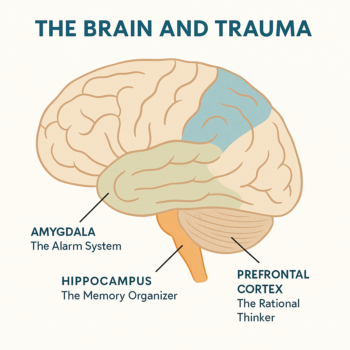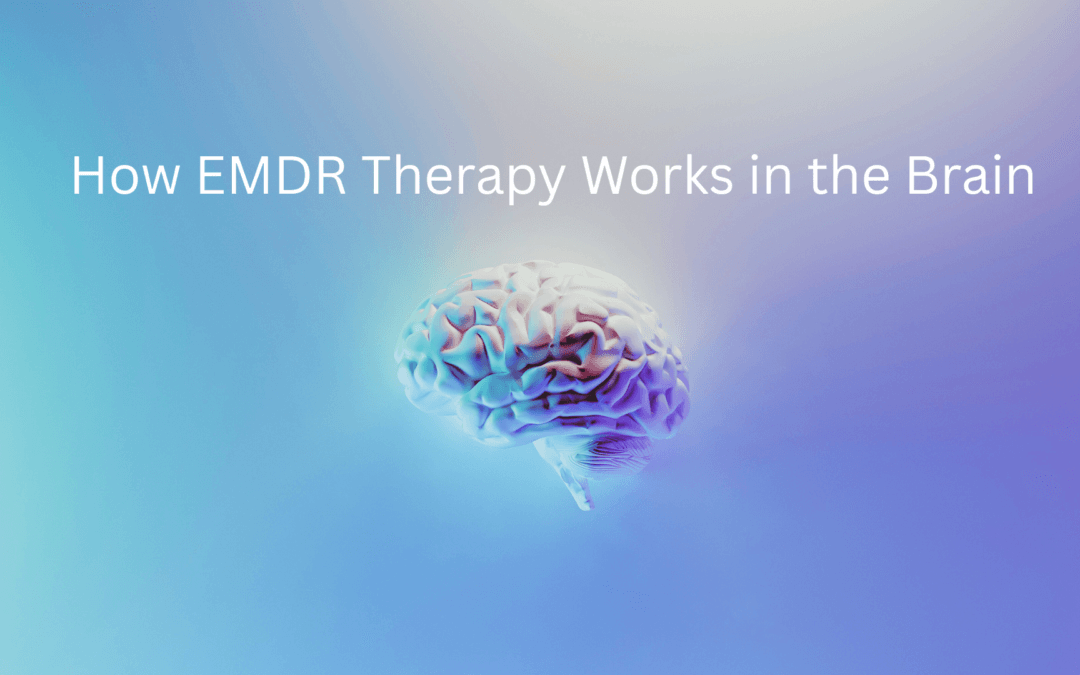What Is EMDR Therapy?
EMDR (Eye Movement Desensitization and Reprocessing) is a powerful, evidence-based approach that helps the brain reprocess distressing memories. It doesn’t require talking through every detail or reliving the pain — instead, EMDR offers a different, more compassionate path to healing.
As a trauma therapist, I was drawn to EMDR therapy more than 20 years ago. At the time, the methods I had available often fell short — either they weren’t effective, or they pushed clients to revisit trauma in ways that felt too painful, too soon. I watched people disengage from therapy, not because they didn’t want to heal, but because the process didn’t feel safe.
What’s Actually Happening in the Brain?
You’re not broken — your brain has been doing its best to protect you.
When trauma occurs, the brain’s natural ability to process experience can become overwhelmed. According to the Adaptive Information Processing (AIP) model — the foundation of EMDR — disturbing events can get “stuck” in the nervous system. These memories often stay tied to the same intense emotions, beliefs, and body sensations experienced at the time of trauma, making it feel like the danger is still happening.
Learn more about the Adaptive Information Processing model via EMDRIA.
The Brain on Trauma
- Amygdala – The Alarm System 🔔
Acts like a smoke detector. After trauma, it can become hyperactive, leaving you on edge even when you’re safe. - Hippocampus – The Memory Organizer 🧠
Helps place memories in time. Trauma can scramble this system, making a past event feel like it’s happening now. - Prefrontal Cortex – The Rational Thinker 💡
This is your reasoning center — it often goes offline during trauma, which makes it hard to think clearly or stay grounded.

Helps with reader understanding
How EMDR Therapy Engages the Brain to Heal
In an EMDR session, we revisit the traumatic memory in a safe, structured, and contained way. While focusing on parts of the memory, you engage in bilateral stimulation (often through guided eye movements, tapping, or alternating sounds). This helps both hemispheres of the brain work together to reprocess the experience.
Over time, the emotional charge softens. The memory doesn’t disappear, but it loses its grip.
And most importantly: you are always in control. You don’t have to speak the details aloud. You can pause at any time. EMDR is not about pushing — it’s about making healing feel possible again.
Learn more from the American Psychological Association’s EMDR overview.
EMDR and REM Sleep: What They Have in Common
REM sleep plays a big role in how we process emotions. EMDR seems to tap into the same system. During REM sleep, your brain naturally works through the day’s events. EMDR mirrors this, allowing the brain to “digest” trauma in a more adaptive way.
Researchers like Dr. Robert Stickgold have found that both REM sleep and EMDR reduce emotional reactivity and increase brain integration — with less activity in the amygdala (fear center) and more in the prefrontal cortex (calming center).
How EMDR Helps My Clients Move Forward
Over the years, I’ve seen EMDR therapy help clients process trauma, reduce overwhelm, and create lasting change. I’ve watched moms heal after birth trauma and reconnect with joy. I’ve seen women regain the confidence to drive after car accidents, and others begin to break patterns of intergenerational trauma.
Perhaps most powerfully, I’ve seen women reclaim their sense of self — their trust in their bodies, their relationships, and their lives.
My clinical experience, backed by research, continues to affirm that EMDR therapy works.
See this clinical review of EMDR in PTSD treatment for additional research support.
Healing Is Possible
Trauma leaves an imprint on the brain — but healing does too. EMDR therapy is not a quick fix, but it offers a real and meaningful path toward feeling safer, more present, and more connected to yourself again.
If you’re wondering whether EMDR therapy might be right for you, I’d be honored to talk with you. You don’t have to carry this alone.
Until next time — breathe gently, move slowly, and meet yourself with kindness.
— Iris Hogan, Therapist

